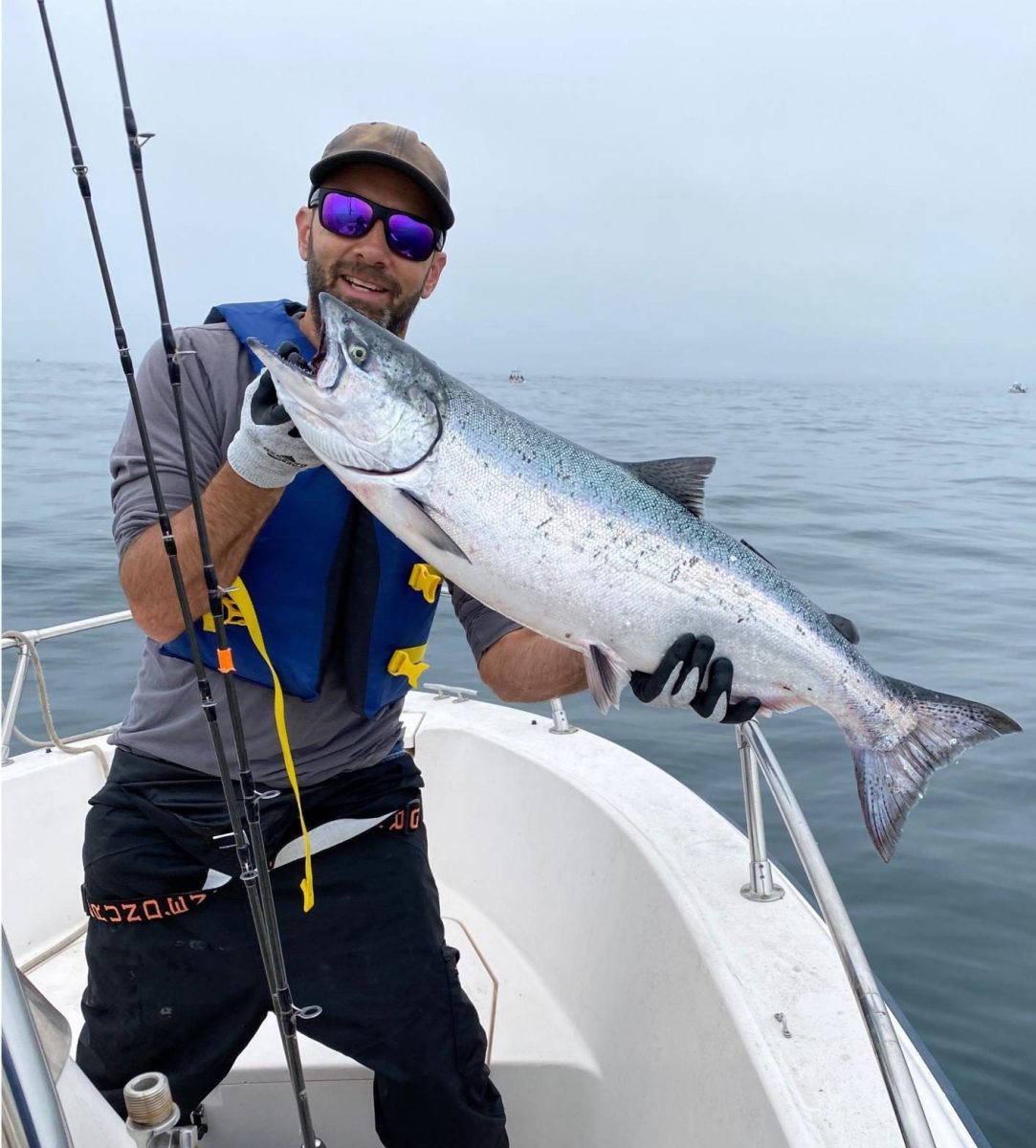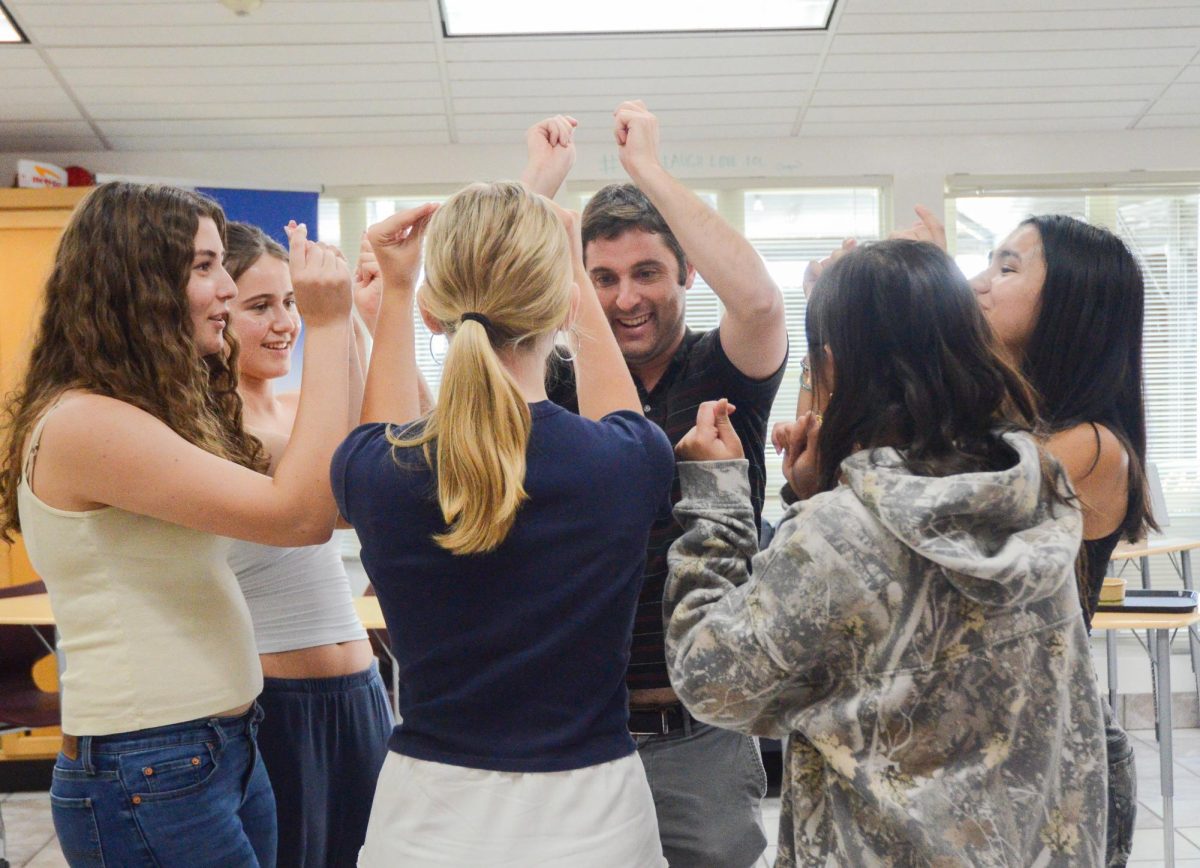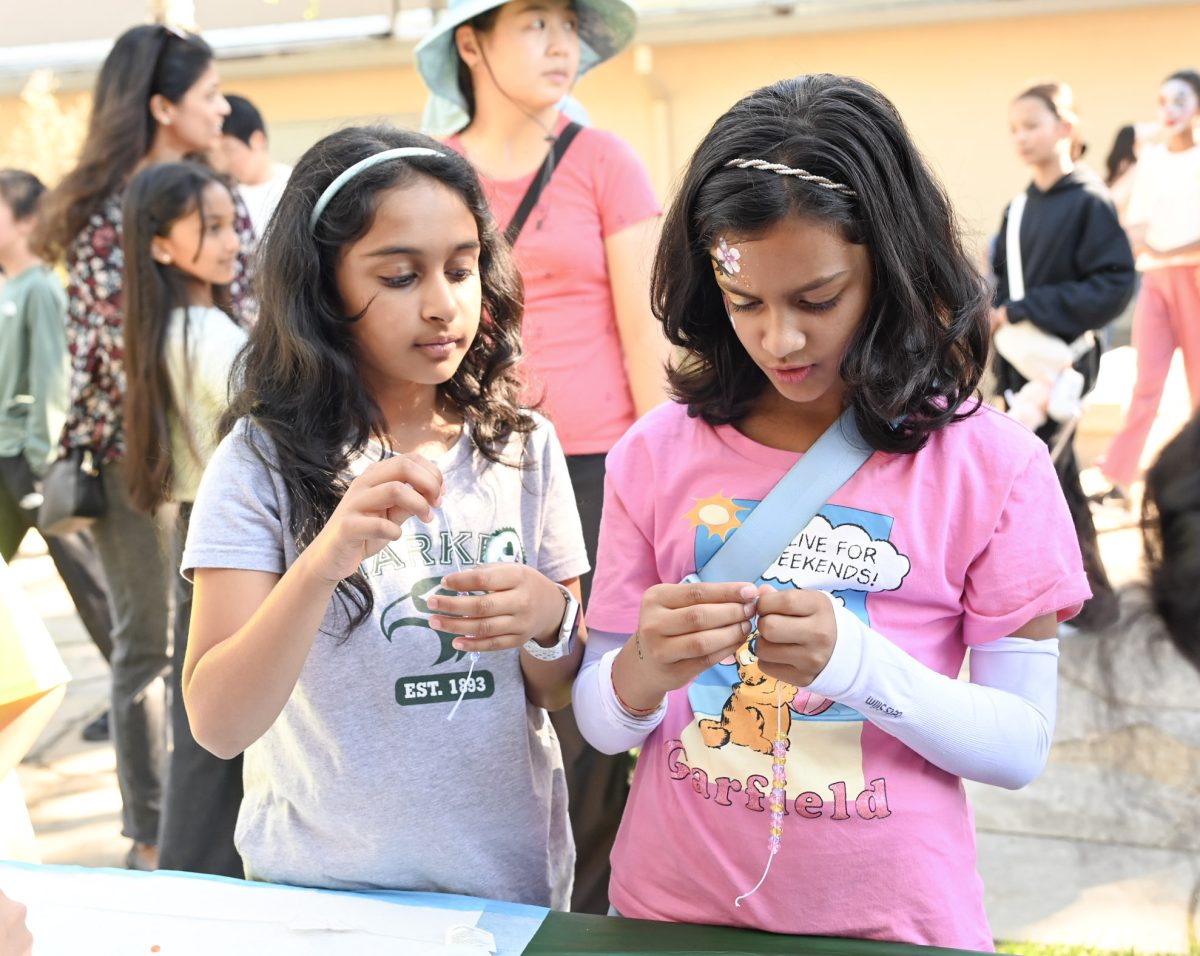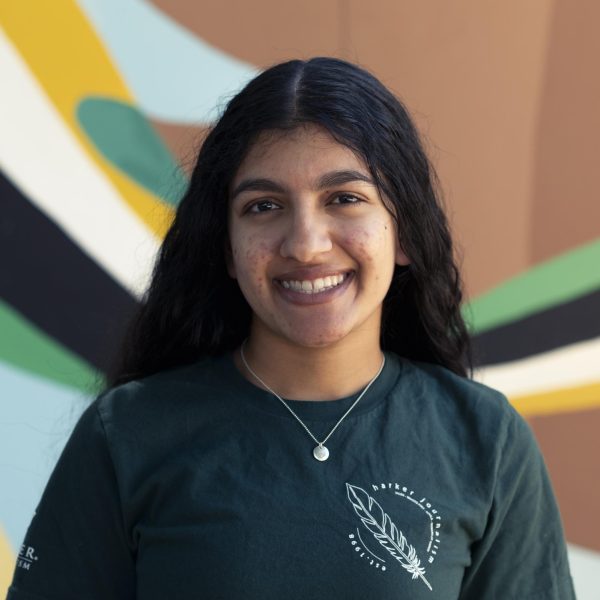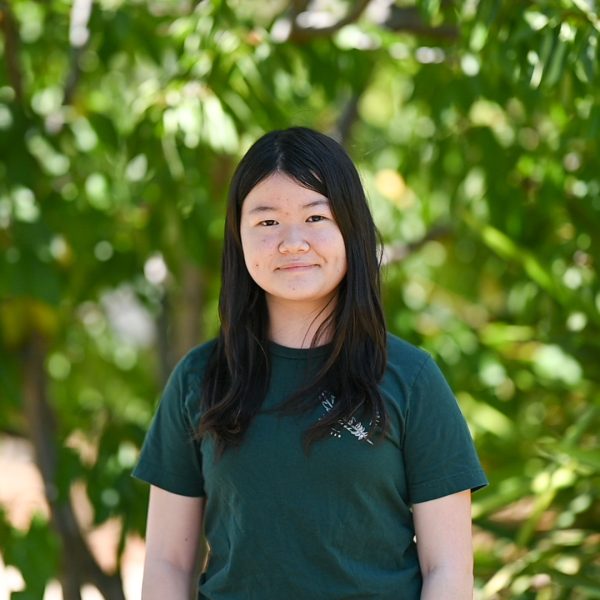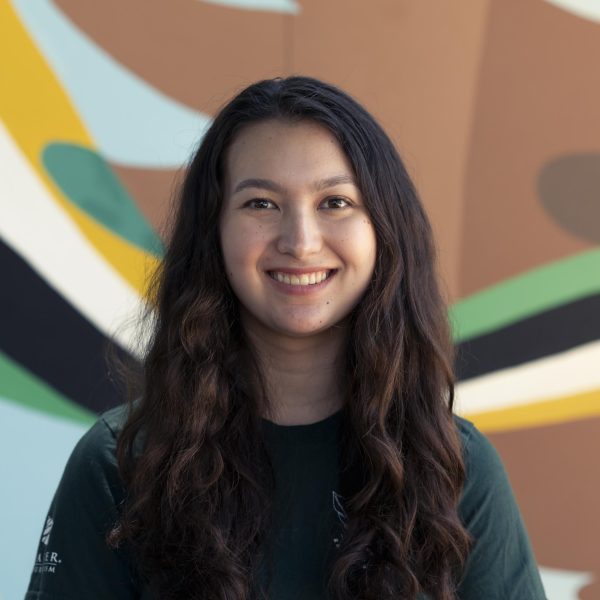Characterized by colorful skulls, marigolds, ornate altars and vibrant costumes, Día de los Muertos, or Day of the Dead, is a Mexican holiday that commemorates loved ones who have passed away. Día de los Inocentes de los Angelitos (Day of the Children and All Saints Day), occurs on Nov. 1 and is dedicated to children who have passed away. The next day, Día de los Difuntos (All Souls’ Day), honors adults.
The history of the holiday dates back around 3,000 years to pre-Columbian Mesoamerica, where the Aztecs viewed death as an integral part of life. To honor the dead, Aztec family members provided them with sustenance and tools to aid them in their different journey to find enlightenment in the afterlife.
Ofrendas, or altars in Spanish, are a recognizable hallmark in modern celebrations of the holiday that act as a tribute for deceased loved ones. The altars often feature the deceased’s photographs, favorite foods, candles and intricate designs. At Harker, Spanish teacher Diana Moss collaborated with the Office of Diversity, Equity and Inclusion (DEI) to set up altars in Main Hall in honor of Día de los Muertos.
“On the altar we have a good number of teachers, including Mr. and Mrs. Nichols and a couple of our English teachers,” Moss said. “There’s a French teacher and a dance teacher. Anybody is invited to put somebody.”
In the classroom, Moss educates students about the holiday with videos and traditional activities. She also incorporated various traditional activities into the curriculum for her students. Students wrote a memoir to somebody who passed away and also tried a special bread called Pan de Muertos.
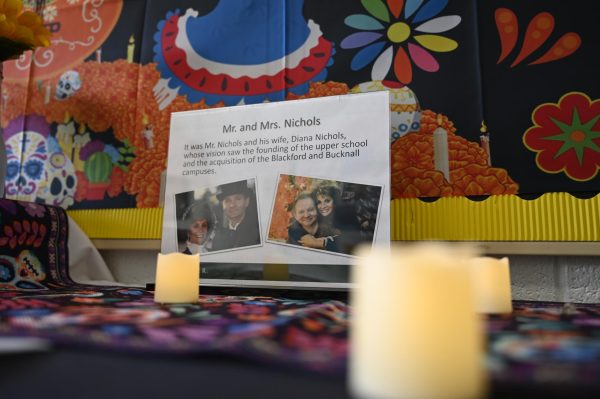
In past years, Moss celebrated the holiday by visiting the annual Día de los Muertos event organized by San Jose artist Chris Esparza, late husband of art teacher Pilar Agüero-Esparza. The event, called El Último Grito (The Last Cry), took place in downtown San Jose at the Mexican Heritage Plaza.
“My favorite part of Día de los Muertos is the color, the dance and celebration,” Moss said. “I love the beautiful dresses that people wear. It was a big celebration and Mr. Aguero Esparza just passed this summer. I’m remembering him because I went to that event several times.”
LatinX Affinity Group member Sofia Vasquez-Perez (11) and her family put up an altar consisting of 13 steps outside. They enjoy a family dinner and share share Pan de Muerto (Bread of the Dead) and hot chocolate.
“We just talk and it’s as if our deceased relatives are there with us,” Sofia said. “We take that time to feel as though we’re together as a family again, as a whole, rather than just our individual time with them. On the top of our altar is always my grandma because she’s one of our closest deceased loved ones with our family.”
For LatinX Affinity Group member Natalie Warmdahl (10), Día de los Muertos is a meaningful opportunity to reconnect with her family.
“I think it’s so sweet that my community comes together to honor people who have passed away,” Natalie said. “My family just remembers and shares funny stories. We really appreciates the role they had in our lives. It’s a day to remember where I came from.”
Sofia admires the altars put up in Main and Harker recognizing the significance of the holiday for students.
“It’s nice seeing Día de los Muertos represented knowing that a lot of people aren’t necessarily interested in sharing that culture,” Sofia said. “I find it nice that Harker is taking action, especially taking it from a non-religious perspective.”




![LALC Vice President of External Affairs Raeanne Li (11) explains the International Phonetic Alphabet to attendees. "We decided to have more fun topics this year instead of just talking about the same things every year so our older members can also [enjoy],” Raeanne said.](https://harkeraquila.com/wp-content/uploads/2025/10/DSC_4627-1200x795.jpg)


















![“[Building nerf blasters] became this outlet of creativity for me that hasn't been matched by anything else. The process [of] making a build complete to your desire is such a painstakingly difficult process, but I've had to learn from [the skills needed from] soldering to proper painting. There's so many different options for everything, if you think about it, it exists. The best part is [that] if it doesn't exist, you can build it yourself," Ishaan Parate said.](https://harkeraquila.com/wp-content/uploads/2022/08/DSC_8149-900x604.jpg)




![“When I came into high school, I was ready to be a follower. But DECA was a game changer for me. It helped me overcome my fear of public speaking, and it's played such a major role in who I've become today. To be able to successfully lead a chapter of 150 students, an officer team and be one of the upperclassmen I once really admired is something I'm [really] proud of,” Anvitha Tummala ('21) said.](https://harkeraquila.com/wp-content/uploads/2021/07/Screen-Shot-2021-07-25-at-9.50.05-AM-900x594.png)







![“I think getting up in the morning and having a sense of purpose [is exciting]. I think without a certain amount of drive, life is kind of obsolete and mundane, and I think having that every single day is what makes each day unique and kind of makes life exciting,” Neymika Jain (12) said.](https://harkeraquila.com/wp-content/uploads/2017/06/Screen-Shot-2017-06-03-at-4.54.16-PM.png)








![“My slogan is ‘slow feet, don’t eat, and I’m hungry.’ You need to run fast to get where you are–you aren't going to get those championships if you aren't fast,” Angel Cervantes (12) said. “I want to do well in school on my tests and in track and win championships for my team. I live by that, [and] I can do that anywhere: in the classroom or on the field.”](https://harkeraquila.com/wp-content/uploads/2018/06/DSC5146-900x601.jpg)
![“[Volleyball has] taught me how to fall correctly, and another thing it taught is that you don’t have to be the best at something to be good at it. If you just hit the ball in a smart way, then it still scores points and you’re good at it. You could be a background player and still make a much bigger impact on the team than you would think,” Anya Gert (’20) said.](https://harkeraquila.com/wp-content/uploads/2020/06/AnnaGert_JinTuan_HoHPhotoEdited-600x900.jpeg)

![“I'm not nearly there yet, but [my confidence has] definitely been getting better since I was pretty shy and timid coming into Harker my freshman year. I know that there's a lot of people that are really confident in what they do, and I really admire them. Everyone's so driven and that has really pushed me to kind of try to find my own place in high school and be more confident,” Alyssa Huang (’20) said.](https://harkeraquila.com/wp-content/uploads/2020/06/AlyssaHuang_EmilyChen_HoHPhoto-900x749.jpeg)







